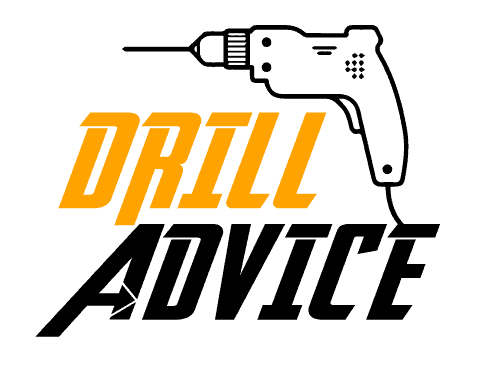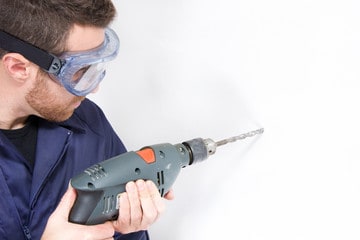The table saw is a very important cutting tool. In woodworking, it is the most used cutting tool with high accuracy. When you use a table saw, you must know how much power does it consume. Because it affects the electricity bill of your home. So let’s see the power consumption of table saws and which one is more worth using in your project.
Table saw power consumption depends on the performance and type. A mini table saw consumes less than 746W power. Job site, benchtop, and compact table saws consume 1850W power. Extremely high-performance tables saws such as cabinet saw, and hybrid saw consume 3500W-5000W.
Table saw consume electricity and produce mechanical power using an electric motor. So motor power is the main power generation tool and its power consumption is measured as tool power consumption. Normally, power consumption is measured with the watt or horsepower. So let’s see all in detail about the power consumption of table saw.
What is the Power of a Table Saw?
The power of the table saw is the energy consumption rate while it is used. The power of the table saw can be measured by the watt or horsepower. A mini table saw consumes 750W – 1500W. Mid-size table saw consumes 1850W-2500W and higher-performance table saws consume 3500W-5000W of power.
When the table saw power is expressed with the horsepower, most home-use table saws are 1.5 to 2 horsepower (HP), while professional-grade or industrial table saws can go up to 3 to 5 HP or more. The power of the table saw determines its cutting capability and its ability to handle hardwoods and thicker materials.
What are the Table Saw Power Consumption Factors?
These are the 8 table saw power consumption factors. When these factors varied, the power consumption of the the table saw is also varied.
Table saw power consumption factors.
- Type of saw blade
- Sawteeth
- Feed force
- Rake angle
- The angle between the cutting velocity vector and wood grains
- The thickness of the cutting layer (chip thickness)
- Moisture content
- The temperature of the wood and many more
How to Calculate the Power of Table Saw?
The table saw input power can be calculated by multiplying voltage and amp. But you can’t calculate the exact output power due to energy loss of mechanical and electrical operations.
So if you have a 220V table saw with a 15amp current its power consumption is 3300W=4.4hp (1hp = 746W)
You can measure the power consumption of electronic devices using the formula (P=VI). These are power consumption for different types table saws.
| Table saw | Voltage and Amps | Power |
| Dewalt 7485 QS.QB (Jobsite) | 230V, 15A | 1850W |
| Dewalt 7485 XE (Jobsite) | 230V, 15A | 1850W |
| Dewalt 7485 LX (Jobsite) | 115V, 15A | 1700W |
| Grizzly Industrial G0869-10″ 2 HP (Benchtop) | 120V, 15A | 1490W |
| SKILSAW SPT99T-01 (Benchtop ) | 120V, 15A | 1800W |
| Metabo HPT 36V (Benchtop) | 36V, 4Ah or 2.5Ah | 144W, 90W |
| Grizzly Industrial G1023RLWX – 10″ (cabinet table saw) | 240V, 15A | 3725W |
| Milwaukee 2736-21HD (Cordless/corded) | 15A, 18V, 12Ah | 15A corded power |
| Dewalt DWE7491RS (Benchtop) | 15A, 120V | 1800W |
How to Choose a Table Saw for DIY Projects, Basic Wood Workers and Professionals?
After you know all about table saw power consumption you can select a table saw for your task. The task can be categorized as below. Some woodworkers use low-performance table saws, and some are used high-performance table saws. So let’s see how to choose a proper table saw among these 8 types of table saws by considering its power consumption.
1. Table Saws for DIY Projects.
For the DIY projects, the Mini table saw is really important. It can operate at less than 100V, and its power consumption is less than 1hp. So if you wish to start a DIY project have a mini table saw.
DIY projects are very famous these days. So a small table saw is very popular. DIY projects are tiny and quick. So low power consumption table saws are really sufficient for these kinds of works.
2. Table Saws for Basic Wood Workers
If you are a beginner in woodworking, you can use a table saw with 2 horsepower. Benchtop table saw is the most suitable table saw for beginners and it is less power consumption table saw. The 2-horsepower table saw has 1500W power, and it is more than enough to handle the cutting load.
3. Table Saws for Professional Woodworkers
If you are a professional woodworker, you can use 5-7 horsepower table saws such as cabinet saw, hybrid table saws, etc. Because of the high performance, you can finish your task easily. 5-7 horsepower is about 4470W, and this is more powerful. When you work with these table saws follow the extremely high safety steps to protect yourself.
How to Waste the Table Saw Power?
Table saw power can be used due to reasons below.
- Dull saw blade – Using a dull saw blade will not cut the material properly. So it will require more power from the motor for the cutting process. As a result of this power consumption will increase when you use a dull or dirty blade.
- Worn brushes – When the brushes are worn in the motor can reduce the motor performance. So you have to spend more time cutting the wood piece.
- Wet workpieces – When the workpiece is wet, it produces more friction between the saw blade and wood surfaces. In order to act against friction, the table saw will require more power from the motor.
- Insufficient power cord – The power cord is a really important thing. if you do not use a proper power cord, power can be wasted as heat. So always use a suitable power supply cord.
- Loose belts and bearings – Loose belts and problematic bearings can increase power consumption. Although the machine is run, it can be used for useful task when the belt is loosened or slipper on the pully. So make sure all parts are working well without any problems.
Can I Use a Circular Saw Instead of a Table Saw?
Yes, you can use a circular saw instead of a table saw in certain situations. Circular saws consume less power lightweight, and are portable. Hence it can be used for lightweight and mobile tasks or work at different sites. Table saws are more powerful and accurate, Hence it is especially used for repeated cuts and cutting along the grain, but they’re less portable due to their size and weight.

